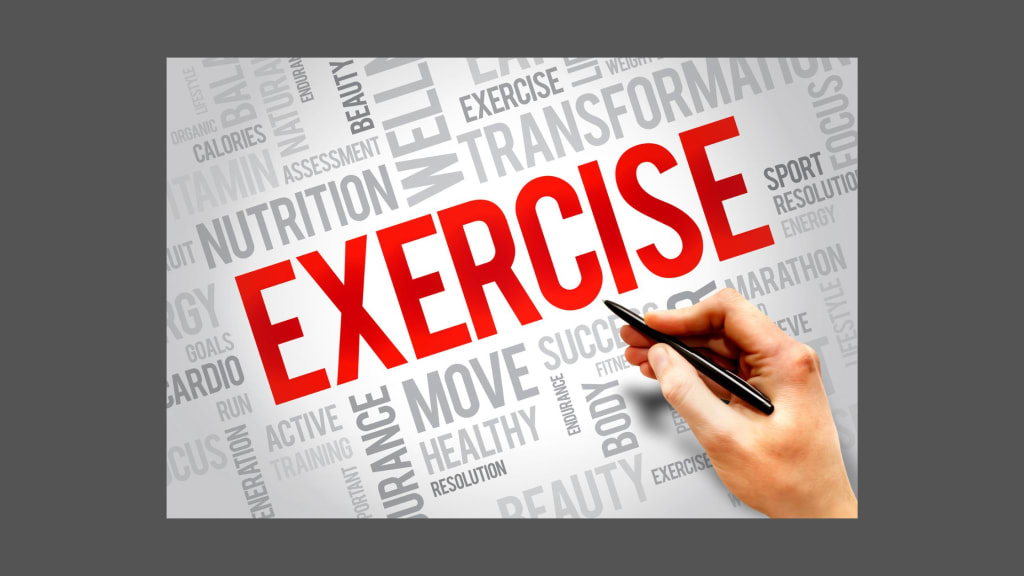What Is The FITT Principle for Muscular Strength and Endurance?
Muscular strength and endurance

If you’re trying to increase your muscular strength and endurance, incorporating the FITT principle into your workout regimen will help you reach your goals faster and more efficiently. The FITT principle considers factors like Frequency, Intensity, Type, and Time of your exercise sessions, to ensure that you are working out optimally.
Frequency: How often you should exercise your muscles
Frequency refers to how often you should exercise to improve your muscular strength and endurance. Depending on your fitness level, this means working out a few times a week, three-to-five times a week, or every day.
Be sure to give your muscles ample time to rest and recover between sessions, which is essential for building muscle.
Intensity — The amount of effort required to complete an exercise
Intensity refers to the amount of effort required to complete an exercise. The level of intensity during a workout should be adjusted to your fitness level, goals, and abilities.
For instance, people exercising for muscular strength may perform a few reps at a much higher weight than those doing aerobic exercises at a lower intensity. As you progress in your program, gradually increase and improve the intensity of your workouts.
Time — The amount of time each exercise session lasts
Time is an essential factor when it comes to achieving your fitness goals. The length of each workout should be discussed and decided by you and your trainer. In the case of muscular strength and endurance training, a one-hour session is usually recommended.
Take enough time to warm up, perform the exercises with the correct form, cool down, and stretch afterward. Additionally, consider any other activities you may be undertaking throughout the day that could affect your energy levels and recovery time.
Type — Different types of exercises used to target different muscle groups
The exercises used to build muscular strength and endurance will vary depending on your individual goals. Exercises can range from weightlifting, squats, deadlifts, and press-ups to more complex moves like Olympic lifts and cable machines.
It is essential to understand the different types of exercises available and how they can target specific muscle groups to maximize results. Discuss any questions or concerns you may have with your trainer or coach before beginning any exercise program.
Some vital strength training exercises are
Calisthenics: There is no need to rely on any special equipment. Your body weight is used to gain strength. Most beginners prefer sit-ups, push-ups, chin-ups, dips, crunches, burpees, planks, and squats.
Resistance bands are large rubber bands that are used in various positions to work different muscle groups. It is also a strength training exercise.
Rest and Recovery — Planning rest days to allow the body to recover properly
Rest and recovery days should be included in any exercise program to allow the body time to recover from the workout session. During rest and recovery, it is vital to ensure that any soreness or stiffness from the day’s activity is allowed time to diminish before moving on to the next workout session. Proper nutrition and hydration will facilitate recovery and help you meet your fitness goals.
What is the difference between muscle strength and muscle endurance?
Muscle strength is defined as the maximum force a muscle can exert in a single action, like lifting a heavy object.
Muscle endurance means the power of a muscle to act over and over again repeatedly until it becomes tired — for example, sit-ups, push-ups, and planks.
How does the FITT principle for muscular strength applied?
Before starting an exercise, you must know specific terms like muscular strength, endurance, flexibility, and strength training. Let me make things clear about this fitness jargon in this article.
Strength training means overloading a group of muscles with maximum force and returning to the start position. These types of strength training exercises are primarily anaerobic. Anaerobic means breaking down glucose without using oxygen in your body. Strength training will be like heavy resistance but with fewer repetitions.
The right exercises are essential in improving your muscular strength and endurance. Luckily, we’ve gathered the top 10 exercises for you to try out, from push-ups and leg raises to squats and crunches. Read through our examples today to start building up your strength and endurance!
Planks
Planks are a great way to strengthen your core, build muscle, and promote balance. You can do a basic plank by lying on your stomach with your forearms on the ground for support, keeping your body straight from head to toe. Hold this position for 30 seconds and contract your abdominal muscles throughout the exercise. As you get stronger, you can increase the time you hold the plank or try more challenging variations such as side planks or knee-to-elbow planks.
Lunges
Walking lunges are a great way to tone your legs and buttocks. To make a walking lunge, take a step forward with your right foot and stand with your feet shoulder-width apart. Your body should be lowered until your right thigh touches the ground, and your left knee should hover just above the ground. Return to the starting position and move back with your left leg.
Abdominal crunches
Abdominal crunches are a great way to tone your abdominal muscles. To do a crunch:
- Lie on your back, your knees bent, and your feet flat.
- Place your hands on your temples or behind your head.
- Slowly lift your head and shoulders off the ground and exhale as you do so.
- Hold for a count of one and then slowly lower back down.
Bicep-curls
Bicep curls are a great way to strengthen your upper arms, shoulders, and back muscles. Start with a weight in each hand, bending your elbows and lifting the weights towards your chest. Keep your elbows close to your body and tuck in your stomach as you curl the weights up. Lower them slowly and repeat 8–12 times before switching to the opposite arm. Increase or decrease the weight depending on how advanced you feel.
Rucking
Rucking is a type of exercise that combines both cardiovascular and strength training. There isn’t exactly a step-by-step process for rucking, but to do it right, you need to:
Be loaded with weight, generally packed in a backpack. To reduce injury, carrying weight should be placed high on your back. Carry this load as you walk. You can choose the pace at which you walk, but rucking requires a speed that causes your heart rate to be at least slightly increased.
Use good posture, which will get better with rucking over time. For those unable to run, rucking can be an excellent alternative because it provides many of the same advantages while being less stressful on the body.
Push-ups
With your elbows tucked under your shoulders and your hands outstretched, ascend onto your forearms. Put your hips, neck, and spine straight with the rest of your body. For up to a minute, maintain this posture. Repeat 2 or 3 times.
Sit-ups
Sit-Ups are another excellent exercise for toning your abdominal muscles. Lie on your back with your knees bent and your feet flat on the ground to do a sit-up. Place your hands on your temples or behind your head. Slowly lift your head and shoulders off the ground and exhale as you do so. Hold for a count of one and then slowly lower back down.
Pull-ups
Pull-ups are a great way to tone your back and arms. Start by gripping a pull-up bar with your hands about shoulder-width apart to do a pull-up. Hang straight from the bar with your legs and feet off the ground. Pull your body up until your chin clears the bar, and lower back down.
Running
Running is a popular exercise that requires little money and can be done anytime. Jogging or running regularly has many health benefits. It has the following benefits:
- It is a weight-bearing exercise that helps build strong bones
- strengthen muscles
- Improve cardiovascular fitness
Squats
Your feet should be broader than hip-distance when you stand. Squat down by bending your knees gradually. Before going back to the starting position, pause in this position.
Choose the Right Type of Exercise
When picking exercises to improve your strength and endurance, knowing what type of exercise is best for reaching your goals is essential. There are two broad categories of exercise that you should consider: aerobic and anaerobic. Both exercises target the muscular system and can increase your strength and endurance. When selecting which exercises are appropriate for you, consider both the intensity level of the exercise as well as which muscle groups need targeted attention.
Start Slow and Build Up Gradually
Beginners should start slowly and focus on small exercises before jumping into complete strength-training programs. Repetition is vital; if you’re focusing on enrolling in classes or weight training, initially performing a small number of sets (1–3) with short breaks will help your body adjust to the exercise. Once you get into a routine, gradually increase the time and intensity of your workout. Ensure you refrain from overexerting yourself by using too much weight or performing too many reps at once, as this can lead to injury or exhaustion.
Monitor Your Progress Regularly
As you get stronger, navigating how much weight and how many reps to add is vital. Make sure you’re regularly checking in with your progress and adjusting to the perfect amount of weight and repetition for your level. This can help identify the most beneficial exercises and track your strength progression over time. Additionally, incorporating rest days is just as important as focused exercise days — make sure you take breaks between training sessions to allow your body time to rest and recuperate!
Vary Your Workouts Regularly
Varying your workouts helps you keep track of your progress, prevents burnout, and decreases the risk of injury. Try adding new exercises to your routine every couple of weeks to ensure that you’re challenging yourself and giving your muscles different stimulation. This change in workout schedule can help keep you motivated and achieve results faster!
Include Rest Days in Your Programme
Rest days are just as crucial as exercise days. They allow your body to rest and recover to perform optimally on your workout days. Plus, giving yourself rest days can help you stay focused in the long run because burnout is inevitable when you take too many consecutive workouts without rest. Aim for at least one full day of rest between intense workouts for the best results.
To Wrap Things Up
These are just a few of the best exercises for toning your body. Remember, you don’t have to do all of them at once. Start slowly and work to do more as you get stronger.





Comments
There are no comments for this story
Be the first to respond and start the conversation.